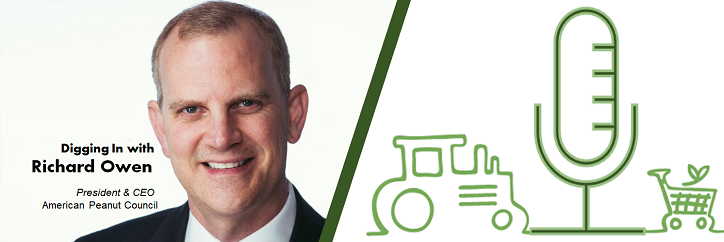What is wheat?
Wheat is one of the oldest and most important grain crops in the world, with Russia, Canada, and the U.S. providing half the exported wheat across the globe. Besides being a key ingredient for the production of breads, cereals, and pastas, wheat can also produce starch, paste, dextrose, gluten, alcohol, among other products. Fun fact: Americans consume 53 pounds of bread each year. At 75-80 calories per bread slice, that’s a lot of dough.
Wheat first requires processing to make food products. The wheat’s grain must first be cracked and then it’s passed through a series of rollers. As the smaller particles get sifted through, the coarser particles pass through additional rollers for further reduction. About 72 percent of the milled grain becomes white flour. Nothing goes to waste, with most milling by-products added to livestock feeds.
Types of wheat
 There are six major classes of wheat, mostly classified as “hard” or “soft”.
There are six major classes of wheat, mostly classified as “hard” or “soft”.
Hard types of wheat are mostly grown in dry climates, leading to higher protein and gluten content. This makes it ideal for breadmaking.
Soft types are grown in more humid conditions, creating a lower protein content and weak gluten. These flours are mostly used for sweeter breads like cakes and cookies.
Here are the six classes of wheat:
- Hard Red Winter
- Grown across the Midwestern U.S., it’s the most popular class of wheat, representing about 40 percent of U.S production
- High in gluten, best for leavened breads
- Hard Red Spring
- Grown mainly in Dakotas, Montana
- Known as the “aristocrat of wheats” for having highest protein content to produce high-quality breads, rolls, bagels, pizza crusts
- Often blended with other wheat flours to enhance quality
- Soft Red Winter
- Grown in eastern third of United States
- Has weaker gluten and lower protein, used primarily for cakes, cookies, crackers
- Hard White
- Mainly grown in Upper Plains, Montana, Idaho, and California, it’s the smallest class of wheat
- Distinguished from Hard Red Wheat by its sandy-beige color,
- Has a slightly lower protein content used for rolls, ‘softer’ breads
- Soft White
- Grown mainly in Pacific Northwest
- Its white kernels and higher starch level make it good for cakes, pastries, muffins, snack foods
- Durum
- The hardest of wheats, with North Dakota and Upper Midwest dominating production
- Best suited for pasts and semolina
Who is eating all this wheat?
Wheat historically has been the cornerstone of western diets, where climate and other growing conditions made the crop an easily available source of our daily bread. In the eastern world, conditions helped make rice the cornerstone commodity. Improved agronomics and global trade have helped open the door to greater access to both commodities for all.
 Today, the taste for wheat-derived foods has spread around the world, nowhere more so than rice-consuming countries like China and India.
Today, the taste for wheat-derived foods has spread around the world, nowhere more so than rice-consuming countries like China and India.
China relies on wheat as a major source of food for its 1.4 billion hungry citizens, making it the world’s top wheat producing and consuming nation. India is second.
But when it comes to simple per-capita wheat consumption, westerners are the undisputed champions. In the United States, we love hot, fresh bread and rolls, pasta, pizza, donuts, rolls, cakes and cookies and a great many other products that rely on wheat as the basic ingredient.
And for many in other less-affluent parts of the world, some type of bread remains a fundamental source of the daily nutrition needed for simple survival.
Global wheat production
What goes into a loaf of bread? Let’s start at the top. An average acre of wheat yields about 40 bushels, while corn yields about 177 bushels per acre and soybeans roughly 50 bushels per acre. Each 60-pound bushel of wheat can produce about 42 pounds of white flour, with about 16 ounces of flour in a 1.5-pound loaf of bread, making 42 1.5-pound loaves of white bread, or 90 1.0-pound loaves of whole wheat bread per bushel.

Wheat is the most-produced crop in the world, with corn and rice trailing behind. It’s the second-largest crop produced for human consumption.

Even so, more land worldwide is devoted to wheat production than any other crop – 221 million hectares, compared with 206 million for corn and 165 million for rice.
Wheat has a global production of 781 million metric tons, with U.S. producing about 45 million metric tons.
Since its 1981 peak, U.S. land planted for wheat has declined by more than 42 million acres, and production has decreased by more than 1.1 billion bushels.
However, Russian wheat production has grown from a 2012 low of 38 million tons to more than 80 million this year – and is projected to reach 91 million by 2030.
And here’s a fun fact to end with:
Processing, or milling, wheat is an ancient practice. Bread was a staple food even during the Neolithic time 10,000 years ago and since has been incorporated into religious rituals and traditions. In fact, folklore holds that eating bread crust makes your hair curlier. Want more fun facts about bread? Read more here!







